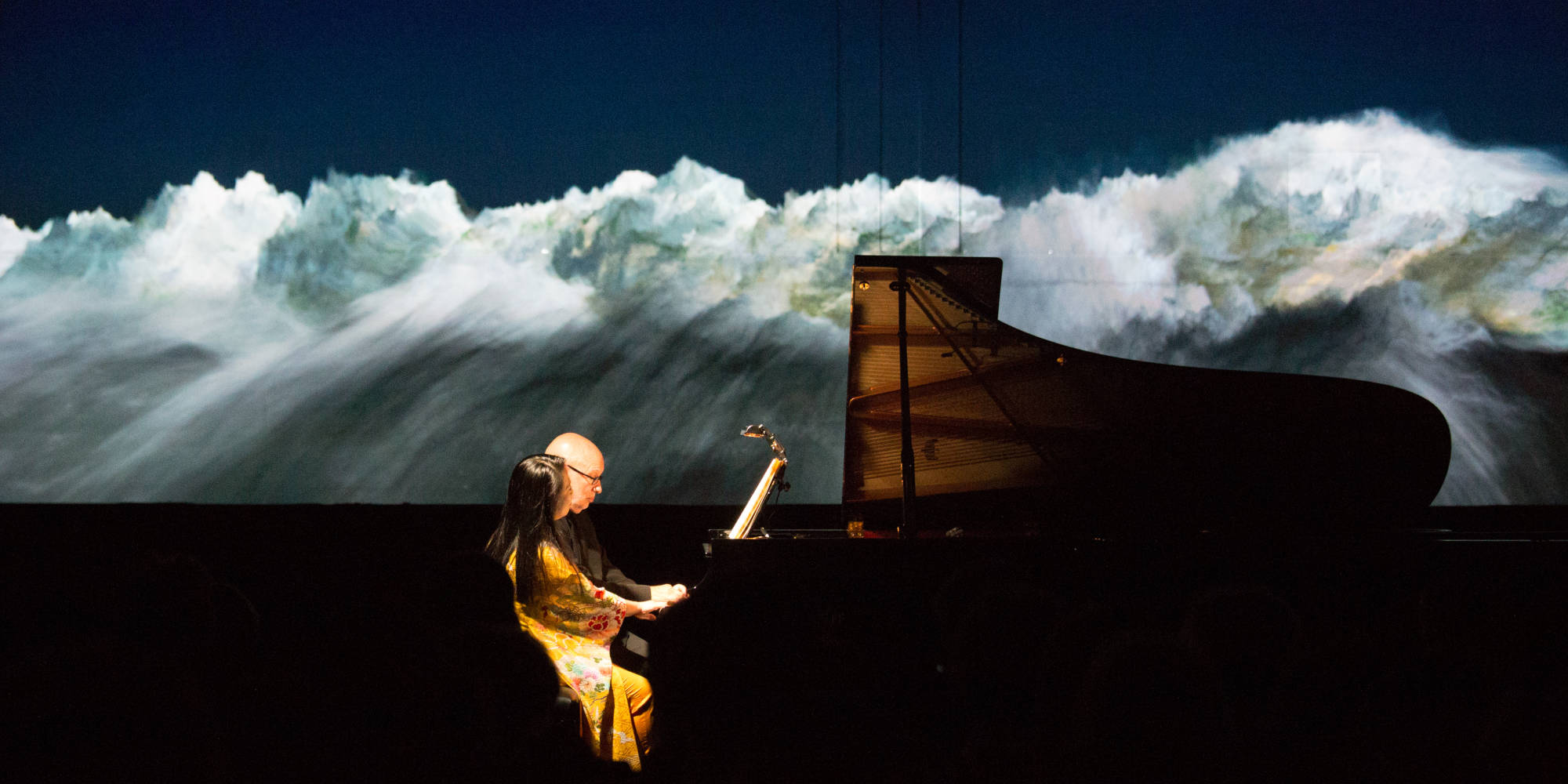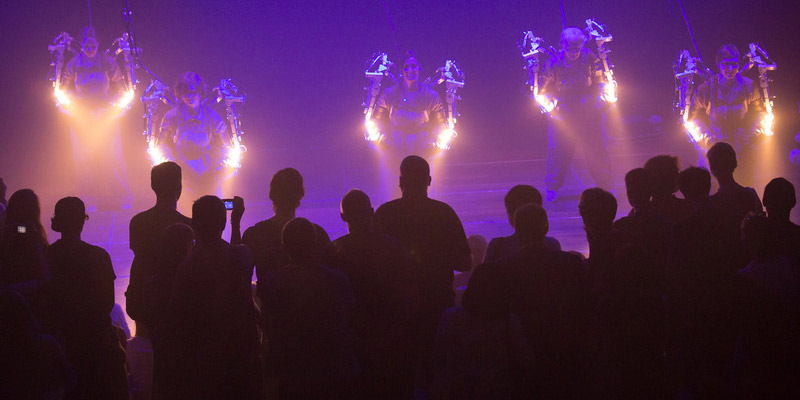Piano Music Meets Digital Images is the programmatic title of the Monday evening concert by Maki Namekawa and Dennis Russell Davies with visualizations by Cori O’Lan that concludes this year’s Ars Electronica Festival. The program commences with a solo performance by Maki Namekawa — the world premiere of the piano version of Mishima by Philip Glass. In the second part of the evening Maki Namekawa and Dennis Russell Davies perform original works for piano four hands by Steve Reich (Piano Phase), Maurice Ravel (Ma Mere l’Oye), and Philip Glass (Stokes).
Mishima: A Life in Four Chapters from 1985, directed by Paul Schrader, is perhaps one of Glass’s greatest successes in the medium of film. The film, which documents Japanese author Yukio Mishima’s final day, presented a number of musical challenges for Glass to work out. Now more than thirty years after its release, both the film and its music represent enduring work by Glass and Schrader.
Philip Glass came to composing music for film very late. Despite the high-water marks of later commercial film successes like The Hours and Dracula, Glass’s early reputation as a composer for film was based on art-house films like Godfrey Reggio’s Koyaanisqatsi and documentaries such as Errol Morris’s The Thin Blue Line.
While later commercial films fit very much into the established order of creation, where the composer comes in at the end of the process, these early films were produced differently with Glass often composing the music before the images were filmed, or simply writing music to the story.
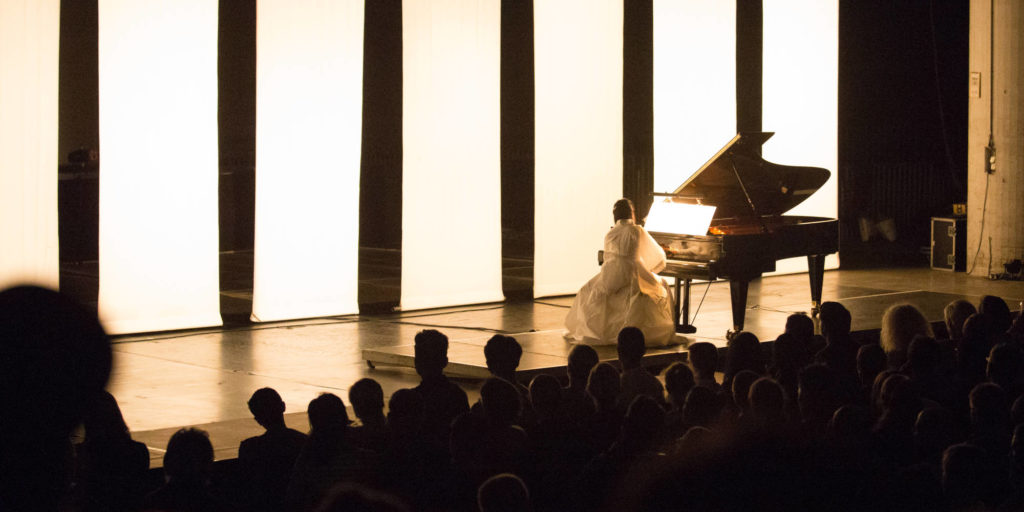
A portion of Glass’s music portrays past episodes of Mishima’s life. It was scored for String Quartet and became the published work String Quartet No.3 Mishima.
The brilliant Mishima score basically lay in obscurity until last year when Maki Namekawa commissioned the music director of the Philip Glass Ensemble, Michael Riesman, to create a solo piano version of the entire score. Therefore, this masterpiece will be heard for the first time in concert.
Namekawa’s account of these new arrangements puts her crystalline technique at the fore – which ended up being a perfect analog for Glass’s music, the music’s portrayal of the character of Mishima, and its first interpretation by a single Japanese musician. Listeners can hear the main issues of Mishima’s life – Beauty, Art, and Action – all converging in Namekawa’s performance.
Namekawa collaborates with the renowned Austrian photographer and video artist Andreas H. Bitesnich who combines a subtle use of digitally controlled light projections with elements recalling aspects of traditional Nō theatre, to illuminate and intensify Namekawa’s dramatic encounter with the Mishima legend through the music of Philip Glass.
The second part of the evening is dedicated to visualized music for piano four hands. Namekawa is joined by her husband and long-time piano-duo partner Dennis Russell Davies, who together with Ars Electronica artistic director Gerfried Stocker initiated the Long Music Night as Chief Conductor of the Bruckner Orchester Linz. In addition to his activities internationally as a celebrated and widely recorded conductor (Grammy and Echo Classical), Davies has performed and recorded as pianist (his ECM recording of Keith Jarrett’s Ritual, which Davies premiered, was recently re-released as both LP and CD).
Maki Namekawa and Dennis Russell Davies perform original works for piano four hands by Steve Reich (Piano Phase), Maurice Ravel (Ma Mère l’Oye), and Philip Glass (Stokes)
Cori O’lan’s digital real-time visualizations of both of these pieces came about through Ars Electronica’s cooperation with the Abu Dhabi Music Festival, where they premiered this past March.
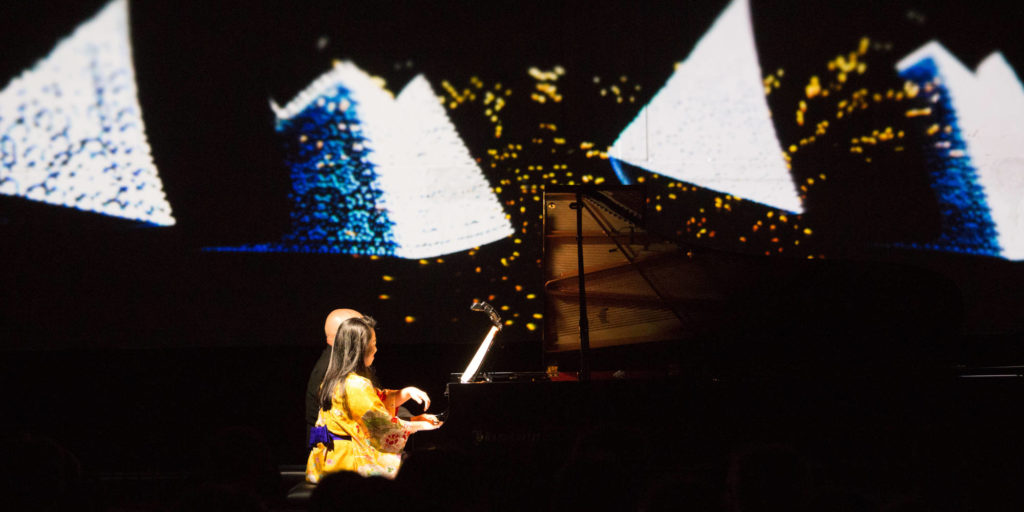
Steve Reich, Piano Phase
Piano Phase was composed in 1967 for two pianos. It is one of the early compositions by Steve Reich where he also uses his “phasing-technique” for instruments, a technique which he derived from early works with tape recorders and which would become a signature style for much of his music.
Both pianists play the same 12-note pattern but over time they vary in speed and dynamics so the result is a constantly floating and modulating combination of this pattern going in and out of phase. Steve Reich described this as “music as a gradual process” and such he pioneered ideas which became important topics in the musical production of the digital age, both in avant-garde as well as in popular music.
The visualizations for Piano Phase have been specifically created for the performance in Abu Dhabi and derive their motifs for the visual interpretation directly from the music: approach and distance, rhythm and flow, clarity and ambiguity of the dancing and interweaving patterns.
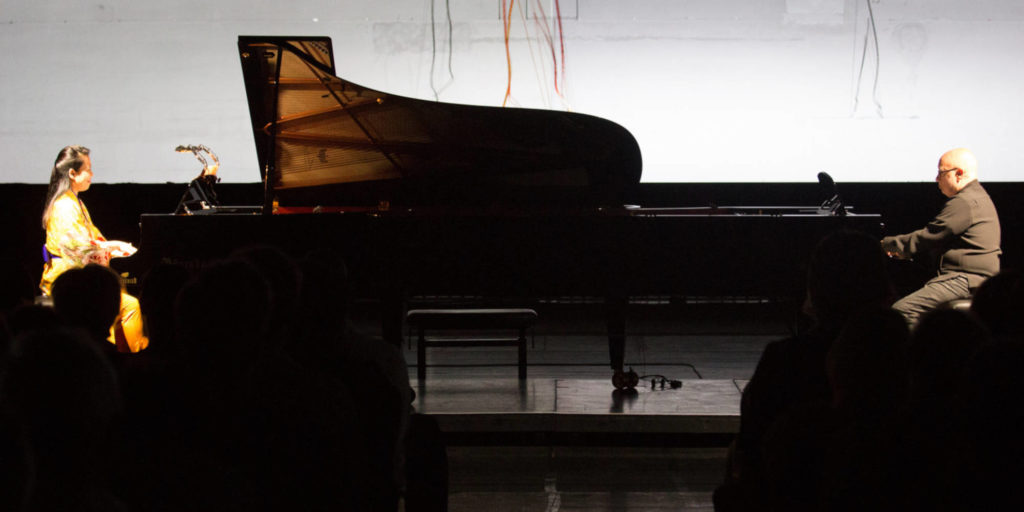
Maurice Ravel, Ma Mère l’Oye
The original four-handed piano version was composed by Ravel between 1908 and 1910, telling stories inspired by Charles Perrault’s fairy tale collection Tales of Mother Goose. Originally composed for the children of his friends, Ravel soon also made an orchestra version, and a ballet.
Sleeping Beauty, Little Thumb, the Empress of the Pagodas and Beauty and the Beast are the fairy tale characters behind the individual parts of Ma mère l’ Oye concluded by a grand finale in the Garden of the Fairies.
In 2016 Ars Electronica coproduced with Abu Dhabi Festival and LA-Phil a large-scale visualization for the orchestra version of Ma mère l’ Oye. The work premiered in February 2016 at the Walt Disney Music Hall in Los Angeles, conducted by Esa Pekka Salonen, with the LA Philharmonic. Due to the very big sonic differences of the piano compared with the full orchestra but also because of the differences in interpretation, a completely new set of visualizations has been created for the performance with Dennis Russell Davies & Maki Namekawa.
Although very different in its graphical style, the piano visualization also follows the original idea of “Klangmalerei” (painting with sound/music) which is a term often used to describe the very special character of Ravels music. All the frequencies and dynamics from the piano sound are literally converted by the computer algorithms into “paint and brushes” directly connected to the live music. Abstract forms appear, sometimes reminiscent of calligraphy, landscapes, mountains, ocean storms or rippling waves on a river, moving and morphing into each other.
Credits:
The visualizations for Piano Phase and Ma Mère l’Oye are commissioned by the Abu Dhabi Music Festival and co-produced with Ars Electronica Futurelab
